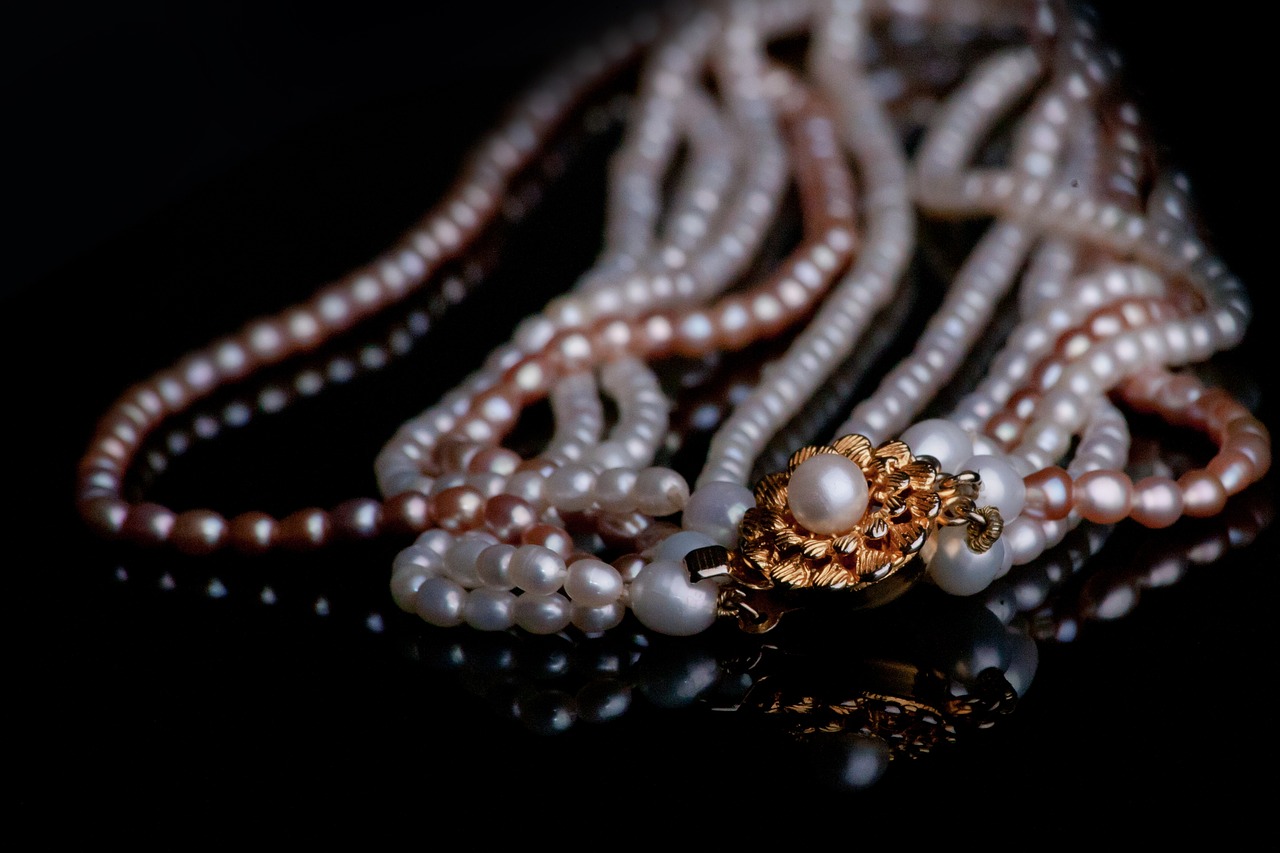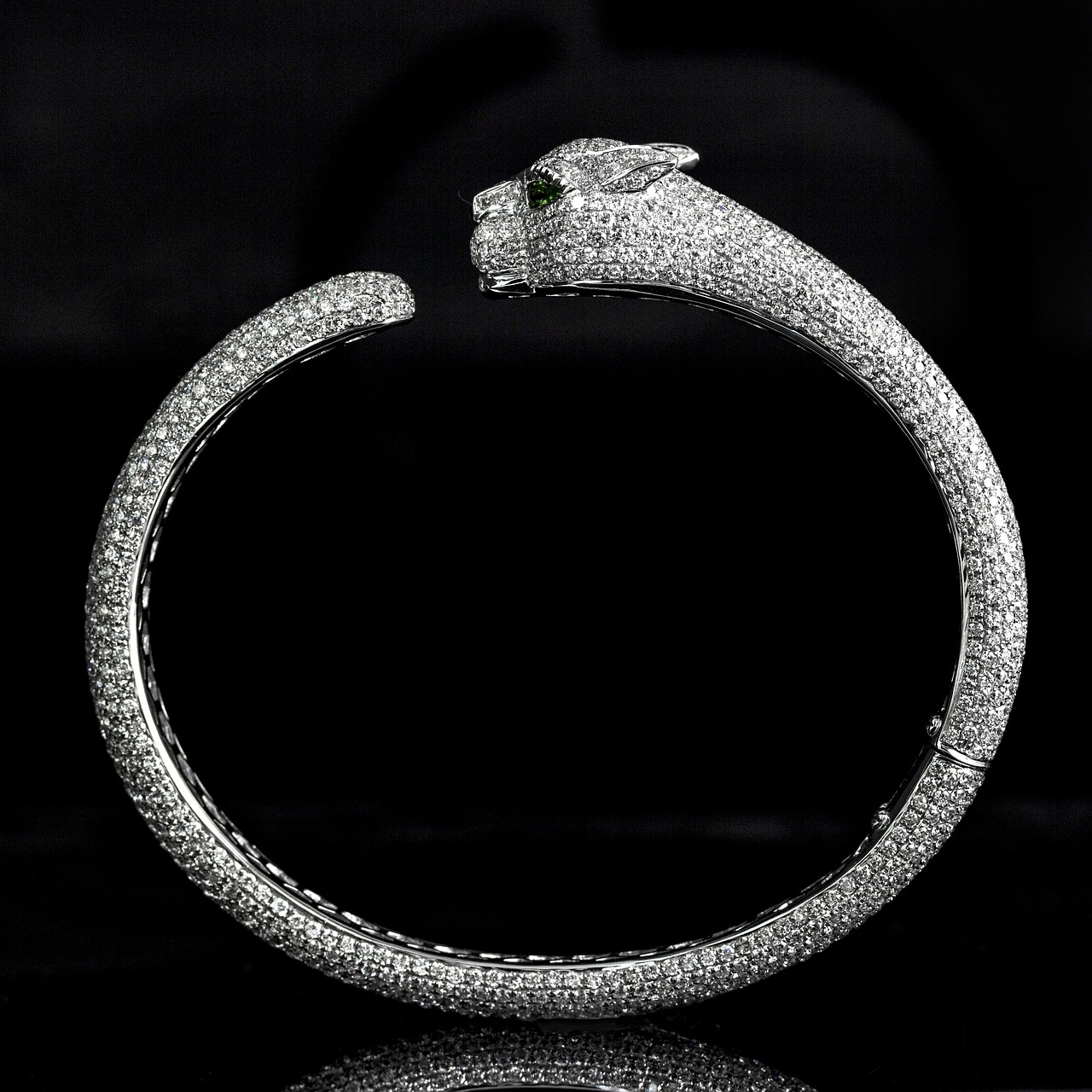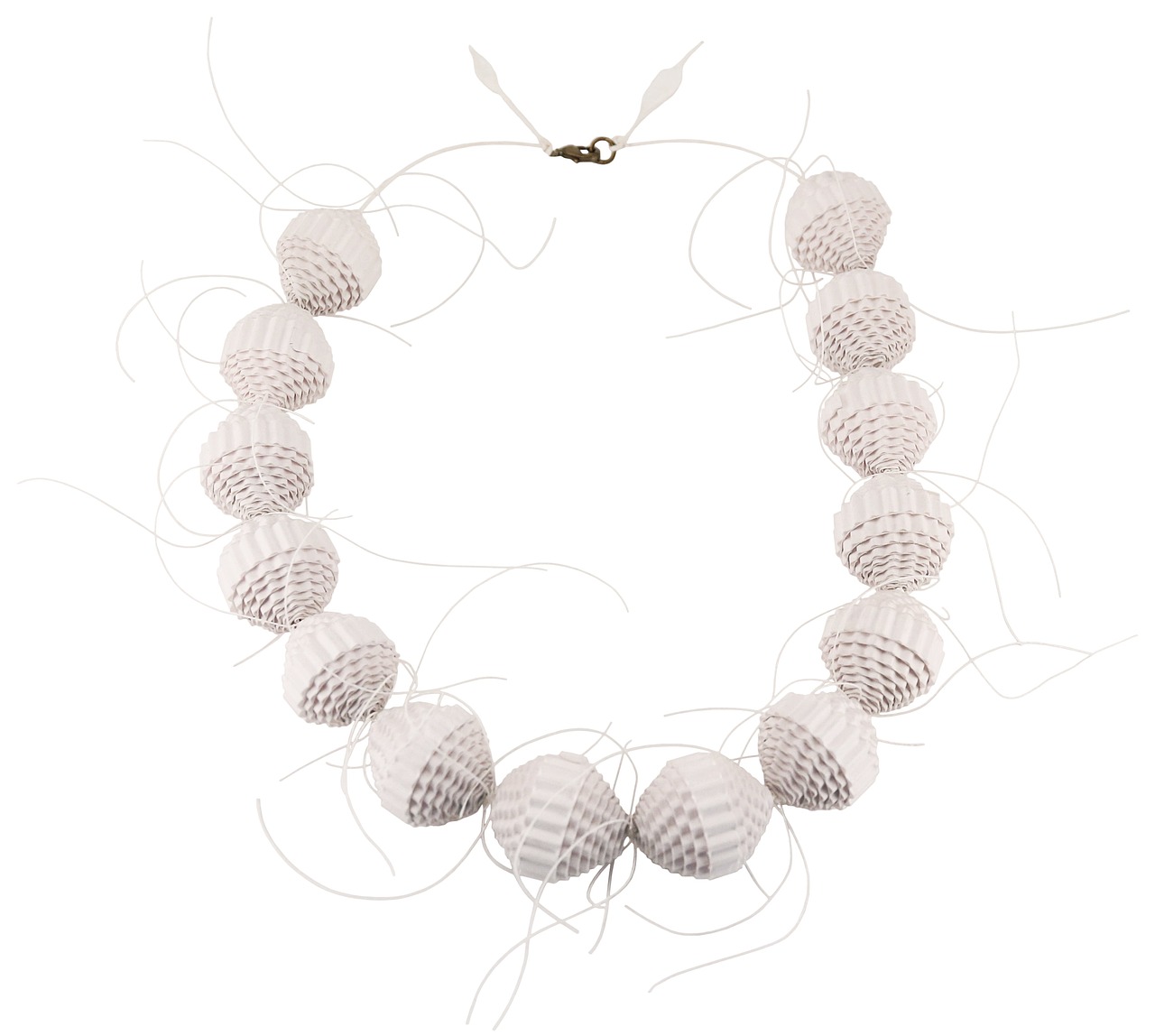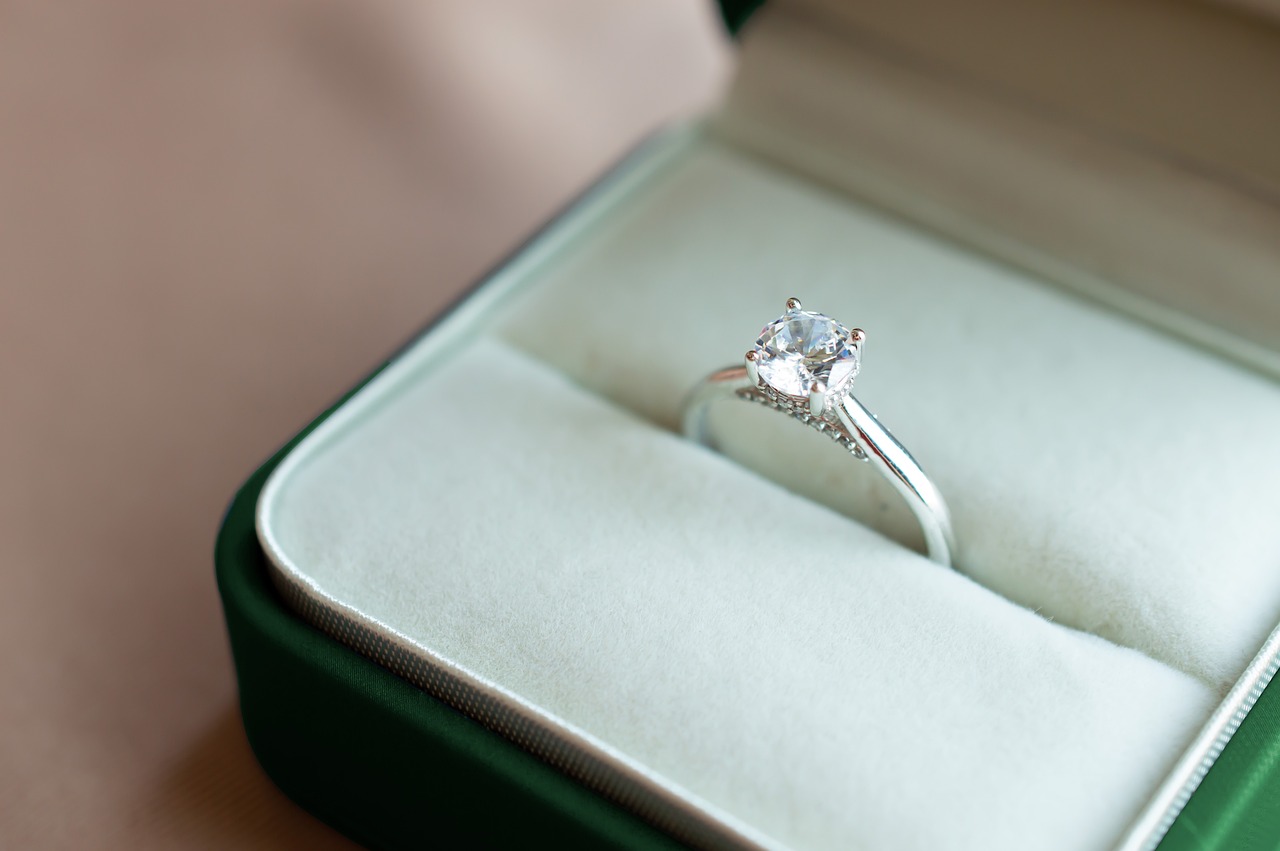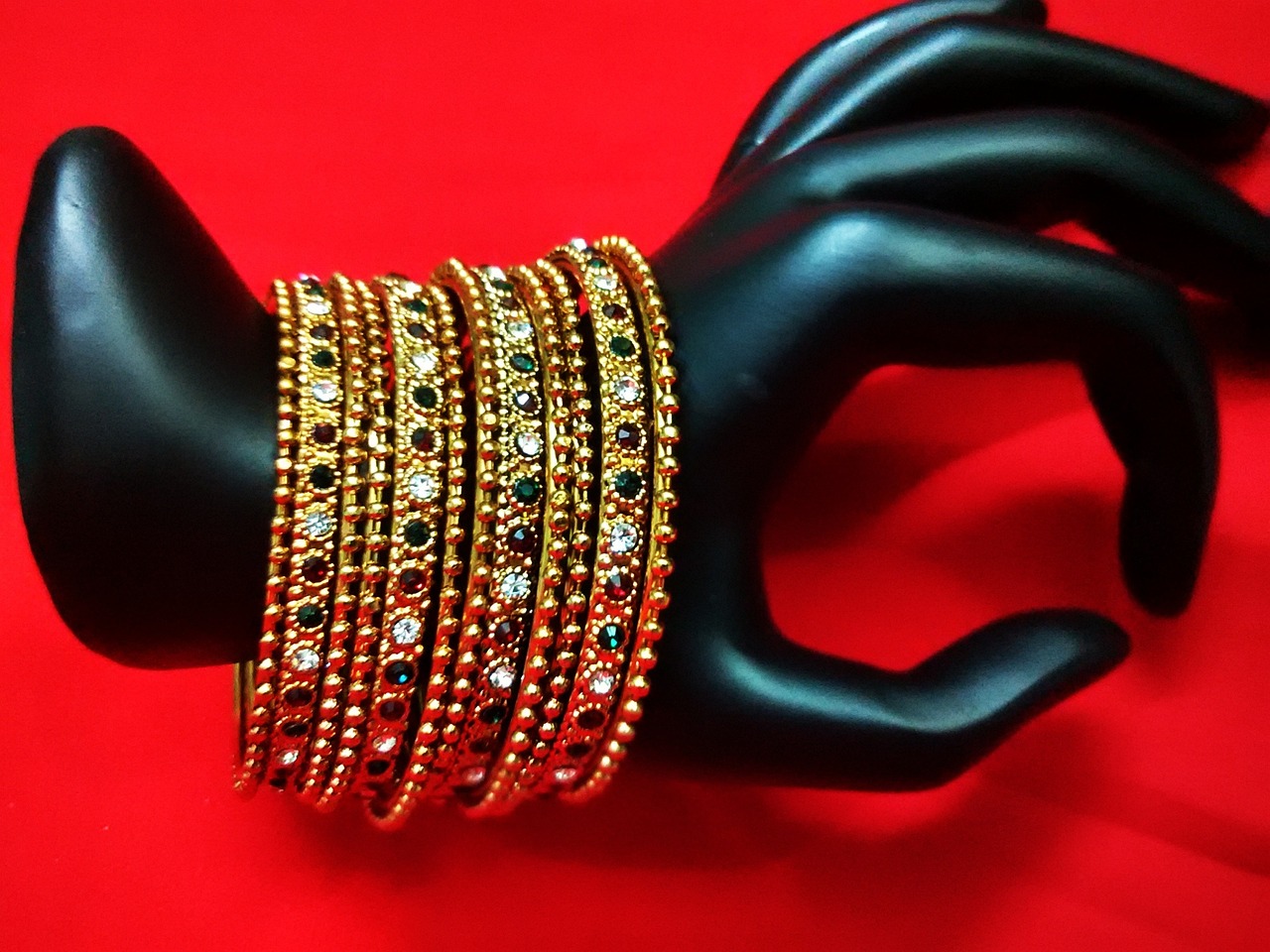This article delves into the key differences between promise rings and engagement rings, shedding light on their meanings, occasions, and cultural significance. Understanding these distinctions can help you make informed decisions in your relationship journey.
What Is a Promise Ring?
A promise ring symbolizes a commitment and love between partners. Often given before a more serious engagement, it serves as a token of loyalty and a promise for the future. The significance of a promise ring can vary from couple to couple, but it generally expresses a desire to remain committed while still allowing time for the relationship to grow.
What Is an Engagement Ring?
In contrast, an engagement ring is traditionally given when a couple decides to marry. This ring symbolizes a formal commitment and is often accompanied by a proposal. Engagement rings carry deep cultural and personal meanings, often representing love, fidelity, and the intention to build a life together.
What Are the Key Differences Between Promise Rings and Engagement Rings?
- Intent: Promise rings signify a commitment that may not yet lead to marriage, while engagement rings are a clear indication of the intention to marry.
- Timing: Promise rings can be given at any point in a relationship, whereas engagement rings are typically presented during a proposal.
- Design: Engagement rings often feature more elaborate designs and precious stones, while promise rings can be simpler and made from various materials.
When Should You Give a Promise Ring?
Promise rings can be given at various stages in a relationship. They often symbolize a pre-engagement commitment, making them ideal for couples who want to express their dedication without rushing into marriage. The right moment to present a promise ring can enhance its meaning and impact.
When Should You Give an Engagement Ring?
Engagement rings are typically given during a proposal, marking a significant transition in the relationship. Knowing when to propose is crucial, as it can significantly affect the relationship’s trajectory and the couple’s future together.
What Materials Are Commonly Used for Promise Rings?
Promise rings can be crafted from a variety of materials, including silver, gold, and gemstones. The choice of material often reflects personal preferences and budget considerations. Each material carries its own symbolic meaning, making it essential to choose one that resonates with the couple’s relationship.
What Materials Are Commonly Used for Engagement Rings?
Engagement rings often feature diamonds or other precious stones set in gold or platinum. Diamonds, in particular, are traditionally associated with enduring love and commitment. The significance of these materials varies, with many couples selecting stones based on personal stories or family heritage.
How Much Should You Spend on a Promise Ring?
Budgeting for a promise ring can be challenging. While there are no strict rules, it’s important to consider your financial situation and the meaning behind the ring. Average costs can vary widely, but it’s essential to choose a ring that reflects your commitment without causing financial strain.
How Much Should You Spend on an Engagement Ring?
The cost of an engagement ring can vary significantly based on personal preferences and budget. Common guidelines suggest spending two to three months’ salary, but ultimately, the best approach is to select a ring that fits your financial situation and feels right for your relationship.
Can You Wear a Promise Ring After Getting Engaged?
Many people wonder if it’s appropriate to wear a promise ring after receiving an engagement ring. The answer often depends on personal choice and the couple’s unique circumstances. Some choose to continue wearing their promise rings as a symbol of their lasting commitment, while others may prefer to set them aside.

What Is a Promise Ring?
A promise ring serves as a beautiful symbol of commitment and love between partners, often given before a more serious engagement. While it may not carry the same weight as an engagement ring, its significance is profound and can vary widely based on the couple’s unique relationship. Understanding its meaning can help clarify its role and importance in a romantic partnership.
At its core, a promise ring represents a pledge to remain faithful and committed to one another. It signifies a promise to work towards a future together, whether that means getting engaged eventually or simply deepening the relationship. The ring can be exchanged at any point in a relationship, making it a versatile token of affection.
Promise rings hold emotional significance, often acting as a precursor to an engagement ring. They can symbolize various promises, such as faithfulness, love, or even personal goals that a couple wishes to achieve together. The act of giving a promise ring can strengthen the bond between partners, serving as a reminder of their commitment during challenging times.
The timing of giving a promise ring can be crucial. It can be presented during a special occasion, such as an anniversary or birthday, or simply as a surprise gesture to express love and commitment. The key is to ensure that both partners understand the meaning behind the ring and are on the same page regarding their relationship goals.
Promise rings can be crafted from a variety of materials, depending on personal preferences and budget. Some popular choices include:
- Silver: A cost-effective and stylish option, silver rings can be adorned with gemstones for added beauty.
- Gold: Available in yellow, white, or rose, gold rings offer a classic and timeless appeal.
- Gemstones: Birthstones or other meaningful stones can be incorporated to add a personalized touch.
Many individuals wonder if it is appropriate to wear a promise ring after receiving an engagement ring. The answer is subjective and often depends on personal preference. Some couples choose to wear both rings as a representation of their journey together, while others may opt to retire the promise ring as they transition into engagement.
Ultimately, the significance of a promise ring lies in its meaning to the couple. It can serve as a powerful reminder of their love and commitment, regardless of the stage of their relationship. By understanding the essence of promise rings, partners can make informed decisions about their significance and how they fit into their unique love story.
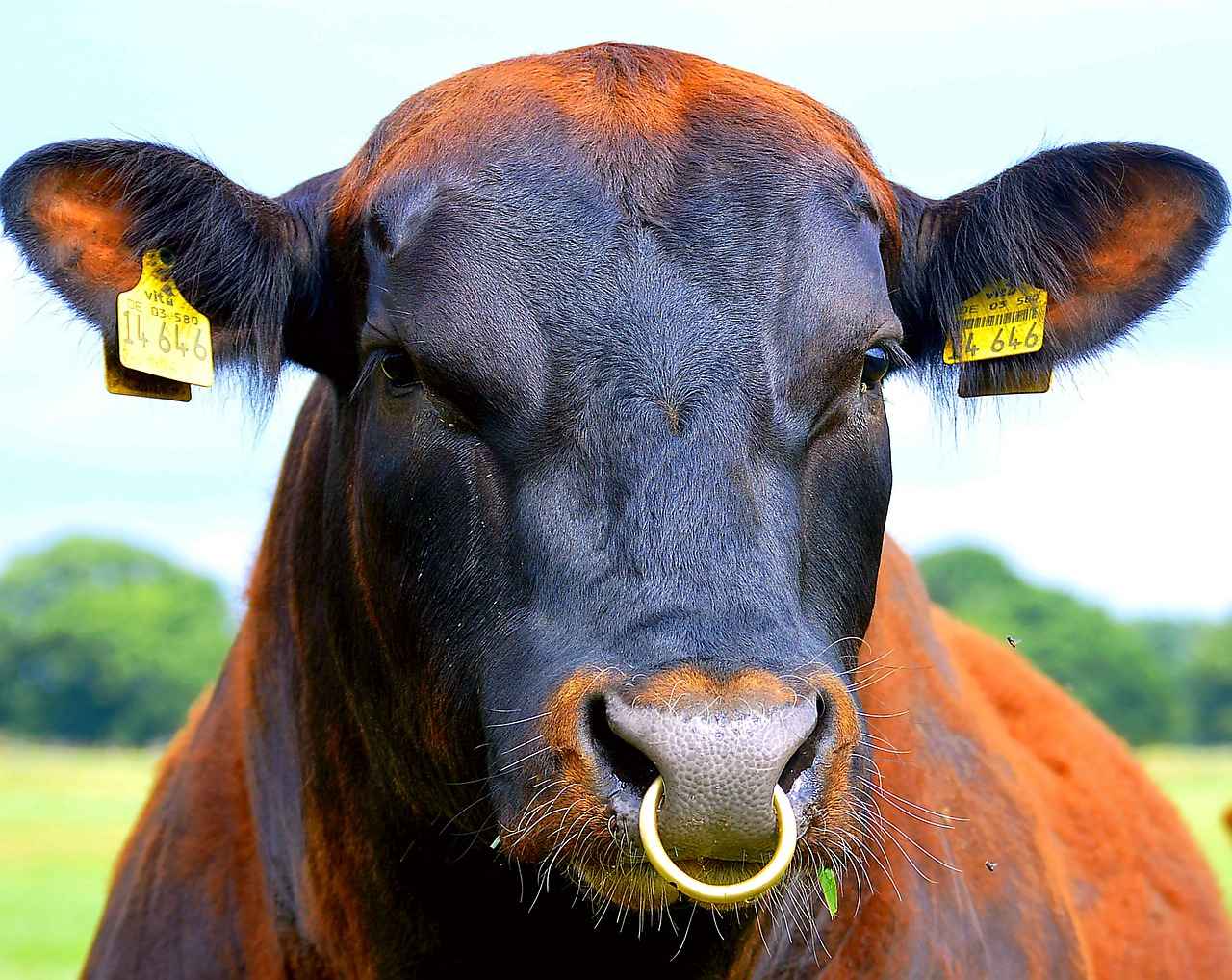
What Is an Engagement Ring?
Engagement rings hold a significant place in the journey of love and commitment between couples. Traditionally, these rings are presented during a proposal, marking a pivotal moment in a relationship. They symbolize a formal commitment to marry and are often adorned with precious stones, primarily diamonds, which add to their allure and significance. The choice of an engagement ring is not merely about aesthetics; it carries a depth of personal and cultural meanings that can vary widely from one couple to another.
Engagement rings embody the promise of a future together. They are often seen as a tangible representation of love and fidelity. The act of giving an engagement ring is steeped in tradition, with roots tracing back to ancient civilizations where rings were exchanged as tokens of commitment. Today, the significance of these rings extends beyond mere tradition; they encapsulate the unique story of the couple.
At their core, engagement rings symbolize a deep commitment and a promise of marriage. The circular shape of the ring represents eternity, a never-ending bond between partners. Additionally, the choice of gemstone can carry personal meanings; for example, diamonds are often associated with strength and purity, while other stones may represent specific qualities valued by the couple.
Engagement rings are typically given during a proposal, a moment that is often filled with emotion and anticipation. This occasion is significant, as it marks the transition from dating to a more serious commitment. In some cultures, the engagement ring may also be presented during a family gathering or a special event, further solidifying the commitment in front of loved ones.
- Diamonds: The most popular choice, representing strength and enduring love.
- Gemstones: Sapphires, emeralds, and rubies offer unique colors and personal meanings.
- Metal Choices: Gold, platinum, and silver are common, each offering different aesthetics and durability.
Determining a budget for an engagement ring can be daunting. While traditional guidelines suggest spending two to three months’ salary, it’s essential to consider personal financial situations and preferences. The key is to find a ring that resonates with your partner’s style while remaining within your budget.
Absolutely! Many couples choose to customize their engagement rings to reflect their unique love story. Customization can range from selecting specific gemstones to designing a one-of-a-kind setting. This personal touch not only enhances the ring’s sentimental value but also ensures it aligns perfectly with the recipient’s taste.
When selecting an engagement ring, consider the following factors:
- Style: Understand your partner’s style preferences—do they prefer classic, modern, or vintage designs?
- Comfort: Ensure the ring fits well and is comfortable for everyday wear.
- Quality: Look for reputable jewelers who provide certification for gemstones and quality materials.
In summary, engagement rings are not just beautiful pieces of jewelry; they are profound symbols of love, commitment, and the promise of a shared future. Understanding their significance, styles, and the considerations involved in choosing the right one can enhance the experience of this special milestone.

What Are the Key Differences Between Promise Rings and Engagement Rings?
Understanding the nuances between promise rings and engagement rings is essential for anyone navigating the journey of love and commitment. While both rings symbolize a bond between partners, they serve distinct purposes and are often given at different stages of a relationship. This section delves into the key differences between these two types of rings, shedding light on their unique roles.
A promise ring typically signifies a commitment to a relationship that may not yet be ready for engagement. It represents a promise to love and support one another, often given during a time when a couple is still exploring their future together. This ring can be exchanged at various points in a relationship, allowing partners to express their dedication without the immediate pressure of marriage.
On the other hand, an engagement ring is a clear indication of a couple’s intention to marry. Traditionally presented during a proposal, this ring marks a significant milestone in a relationship. It signifies that both partners are ready to take the next step towards a lifelong commitment. The engagement ring often comes with cultural expectations and is usually more elaborate than a promise ring.
While both rings represent commitment, the intent behind each is different. A promise ring is often seen as a precursor to an engagement, a way to solidify a couple’s bond without the immediate plans for marriage. In contrast, an engagement ring is a definitive statement of intent, indicating that a proposal is on the horizon.
- Promise Rings: Given to signify love and commitment without immediate plans for marriage.
- Engagement Rings: Presented during a proposal as a formal commitment to marry.
The cultural significance of these rings can also vary widely. In some cultures, promise rings are seen as a rite of passage, while in others, they may not hold the same weight. Engagement rings, however, are often steeped in tradition, with specific styles and materials that carry their own meanings. For instance, diamonds are commonly associated with engagement rings due to their durability and symbolism of eternal love.
When deciding between a promise ring and an engagement ring, it’s important to consider the timing and the message you wish to convey. A promise ring may be appropriate during a time of uncertainty or when both partners are not ready for marriage but still want to express their commitment. Conversely, an engagement ring should be chosen when you feel confident in your relationship and ready to take the next step towards marriage.
Ultimately, understanding the key differences between promise rings and engagement rings can help couples make informed decisions about their relationship milestones. Whether you opt for a promise ring or an engagement ring, the most important aspect is the love and commitment that the ring represents.
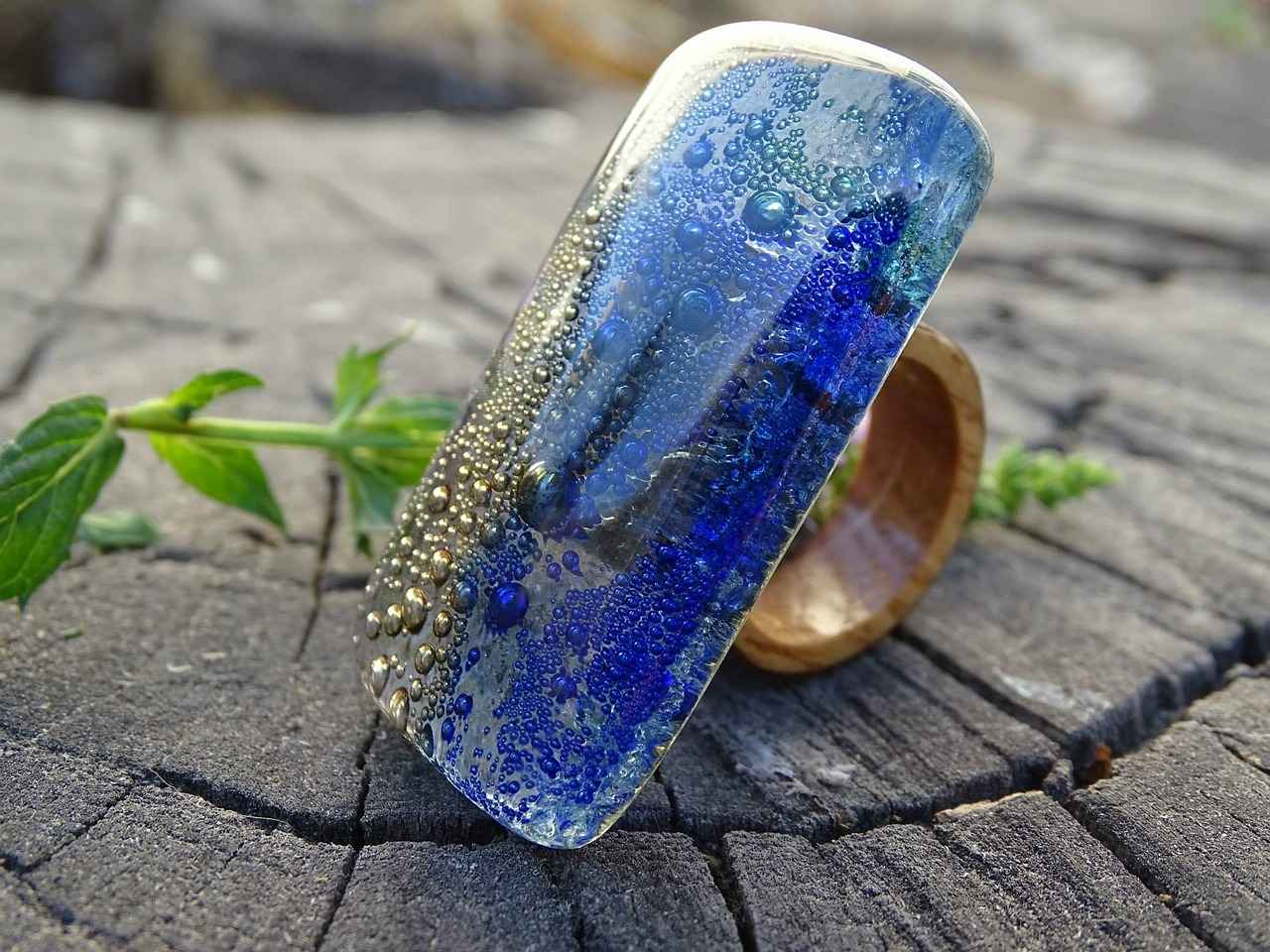
When Should You Give a Promise Ring?
Understanding the right moment to give a promise ring can significantly enhance its meaning and impact in a relationship. Unlike engagement rings, which typically symbolize a commitment to marry, promise rings represent a broader commitment and can be given at various stages in a relationship.
There are several key moments when giving a promise ring can be particularly meaningful:
- Early Relationship Milestones: A promise ring can be an excellent way to signify your commitment early in the relationship. It shows that you are serious about your partner and the future you envision together.
- Before an Engagement: Many couples choose to exchange promise rings as a prelude to engagement. This signifies that both partners are on the same page regarding their relationship’s direction.
- Long-Distance Relationships: If you and your partner are facing the challenges of a long-distance relationship, a promise ring can serve as a tangible reminder of your commitment to one another, helping to bridge the physical gap.
- During Difficult Times: When facing challenges, presenting a promise ring can reaffirm your dedication to each other, reinforcing the bond during tough moments.
The timing of giving a promise ring can greatly influence its significance. A well-timed ring can enhance the emotional weight of the gesture. For instance, presenting a promise ring on a special anniversary or during a significant life event can make the moment even more memorable.
When deciding to give a promise ring, consider the following:
- Mutual Understanding: Ensure that both partners share a similar understanding of what a promise ring represents. Open communication about its meaning can prevent misunderstandings.
- Personal Preferences: Think about your partner’s style and preferences. A promise ring should reflect their personality, whether it’s a simple band or a more elaborate design.
- Future Intentions: Consider how the promise ring fits into your long-term plans. If you envision a future engagement, discuss this openly with your partner.
Giving a promise ring can have several benefits:
- Strengthening Bonds: The act of giving a promise ring can strengthen the emotional bond between partners, reinforcing their commitment to each other.
- Symbol of Faithfulness: A promise ring serves as a symbol of faithfulness and loyalty, reminding both partners of their dedication.
- Encouragement for Future Steps: It can act as a stepping stone toward a more serious commitment, encouraging discussions about the future and shared goals.
In summary, the decision to give a promise ring should be thoughtful and intentional, taking into account the timing, mutual understanding, and personal preferences of both partners. By recognizing the significance of this gesture and choosing the right moment, you can enhance the emotional impact of the promise ring, making it a cherished symbol of your relationship.
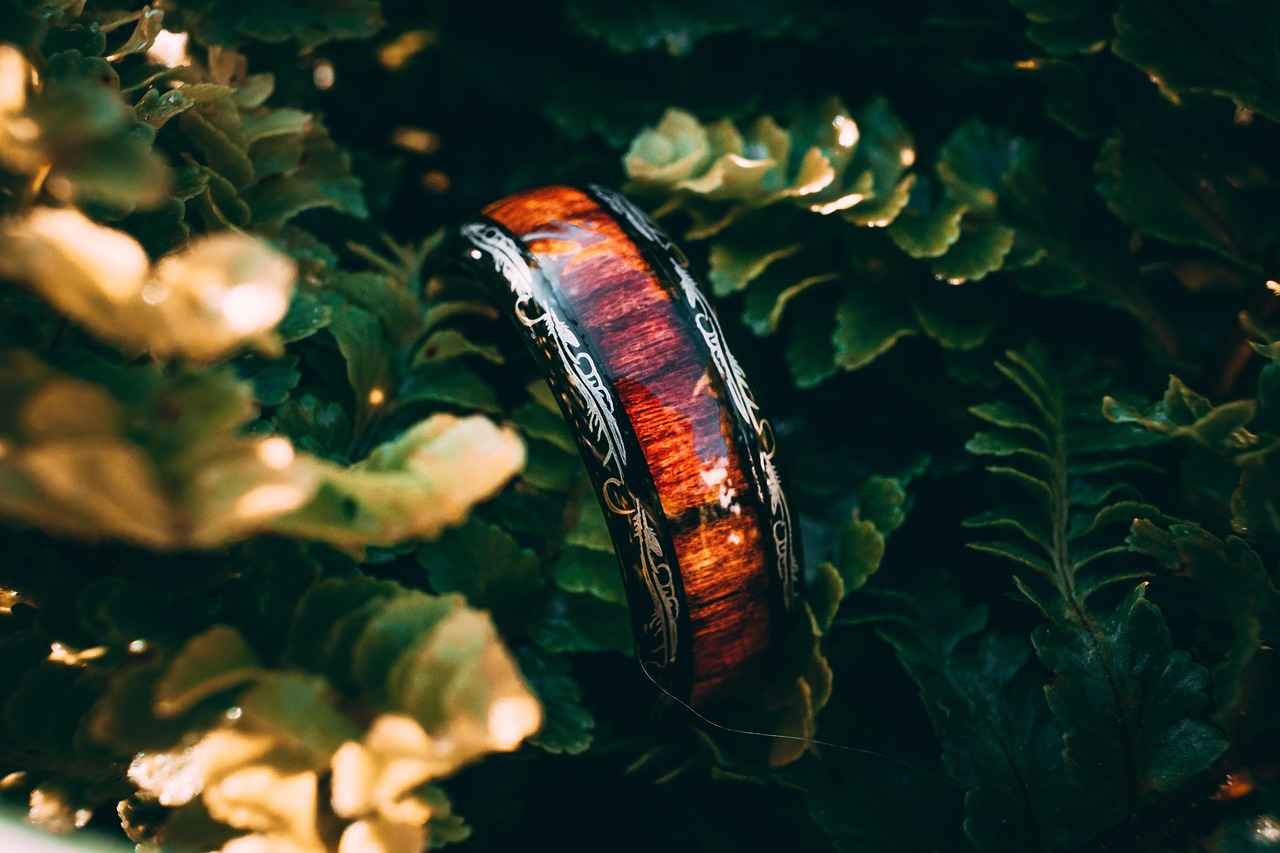
When Should You Give an Engagement Ring?
Deciding on the right moment to present an engagement ring is a crucial milestone in any relationship. This significant gesture not only symbolizes love but also marks the transition to a more serious commitment. Understanding when to propose can greatly influence the future trajectory of your relationship.
What Makes the Perfect Moment for a Proposal?
Choosing the right time to propose is about more than just the perfect setting or a beautiful ring. It involves understanding your partner’s feelings, the dynamics of your relationship, and the broader context of your lives. Here are some key factors to consider:
- Relationship Milestones: Consider the significant moments you’ve shared together. Have you discussed your future? Do you feel a strong bond? These milestones can indicate readiness for engagement.
- Mutual Goals: Ensure that both partners are on the same page regarding future aspirations. Discussing topics like marriage, family, and career can provide insight into whether the time is right.
- Life Circumstances: External factors such as career changes, financial stability, or personal challenges can impact the timing of a proposal. It’s essential to assess whether you both feel secure in your current situation.
How to Gauge Readiness for Engagement
Before popping the question, it’s important to gauge your partner’s readiness for engagement. Here are some signs that may indicate they are open to the idea:
- Open Conversations: If you frequently discuss marriage or future plans, it may be a sign that your partner is thinking about taking the next step.
- Emotional Connection: A deep emotional bond can indicate readiness. If you both feel comfortable and secure in your relationship, it may be the right time.
Creating the Ideal Proposal Moment
Once you’ve determined that the time is right, consider how to make the proposal memorable. Here are some ideas:
- Personalized Setting: Choose a location that holds significance for both of you, whether it’s where you had your first date or a favorite vacation spot.
- Incorporate Meaningful Elements: Consider adding personal touches, like a favorite song or a family heirloom, to make the moment even more special.
Understanding the Impact of Timing
The timing of your proposal can have lasting effects on your relationship. Proposing too early may lead to uncertainty, while waiting too long can create pressure. Striking the right balance is key. Remember that communication is vital; discussing your feelings and intentions openly can help both partners feel more aligned.
Ultimately, the decision of when to give an engagement ring should be based on a combination of emotional readiness, mutual understanding, and the unique dynamics of your relationship. By being attentive to these factors, you can create a beautiful moment that signifies the beginning of a new chapter in your lives together.

What Materials Are Commonly Used for Promise Rings?
When it comes to promise rings, the choice of materials can significantly influence not only the ring’s appearance but also its symbolic meaning. Couples often select materials that resonate with their personal style and the unique sentiment they wish to convey. This section delves into the most popular materials used for promise rings, exploring their characteristics and the meanings associated with each.
- Silver: Known for its affordability and versatility, silver is a common choice for promise rings. Its reflective quality symbolizes purity and clarity, making it a fitting representation of the commitment shared between partners. Silver rings can be easily customized with engravings or unique designs, adding a personal touch.
- Gold: Whether in yellow, white, or rose tones, gold is a classic material that signifies wealth and lasting love. Gold promise rings are often seen as a more traditional option, representing a strong bond that is meant to endure. The choice of gold can also reflect the couple’s individual preferences, with each color carrying its own meaning.
- Gemstones: Incorporating gemstones into promise rings adds a layer of personal significance. Popular choices include amethyst for peace, blue topaz for love, and emerald for fidelity. Each gemstone carries its own unique symbolism, allowing couples to choose a stone that resonates with their relationship.
- Platinum: Known for its durability and luxurious appeal, platinum is an excellent choice for those looking for a promise ring that will stand the test of time. Its rarity and strength symbolize deep commitment and unwavering love, making it a favored option for couples who seek a more substantial ring.
- Alternative Metals: For those who prefer a modern twist, alternative metals such as titanium or stainless steel offer a unique and contemporary choice. These materials are often more affordable and can be crafted into stylish designs, appealing to couples looking for something different.
In addition to the materials themselves, the design of the promise ring plays a crucial role in its significance. Many couples opt for rings that feature intricate designs or meaningful symbols, such as hearts or infinity signs, which further enhance the ring’s emotional value.
Ultimately, the choice of material for a promise ring should reflect the couple’s shared values and the commitment they are making to one another. Whether opting for classic gold or silver, or choosing a unique gemstone, the material selected carries profound meaning and serves as a lasting reminder of their bond.
As you consider the options for promise rings, remember that the most important aspect is the sentiment behind the ring. The material, while significant, should align with the couple’s relationship and the promise they are making to each other.

What Materials Are Commonly Used for Engagement Rings?
When it comes to engagement rings, the choice of materials plays a crucial role in both their aesthetic appeal and symbolic significance. Traditionally, engagement rings have been crafted from precious metals and adorned with stunning gemstones, each material carrying its own meaning and history.
The most popular metals for engagement rings include gold, platinum, and white gold. Each of these metals has unique properties that contribute to the ring’s overall look and durability.
- Gold: Available in yellow, white, and rose variations, gold is a classic choice. Its warmth and luster symbolize wealth and prosperity.
- Platinum: Known for its strength and hypoallergenic properties, platinum is a premium choice that signifies lasting love. Its natural white sheen complements diamonds exceptionally well.
- White Gold: A popular alternative to platinum, white gold is often alloyed with metals like palladium or nickel to enhance its durability and give it a striking silver appearance.
Diamonds are often referred to as a girl’s best friend for a reason. Their unmatched brilliance and durability make them the quintessential choice for engagement rings.
- Symbol of Eternity: The strength of a diamond symbolizes enduring love, making it a fitting choice for a lifelong commitment.
- Variety of Cuts: Diamonds come in various cuts, including round, princess, and oval, allowing for personalization that reflects the wearer’s style.
- Color and Clarity: While most people prefer colorless diamonds, colored diamonds, known as fancy diamonds, are gaining popularity for their uniqueness.
While diamonds reign supreme, other gemstones are also becoming increasingly popular for engagement rings.
- Sapphires: Known for their deep blue hue, sapphires are durable and symbolize loyalty and nobility.
- Emeralds: With their rich green color, emeralds are associated with rebirth and love, making them a romantic choice.
- Rubies: Representing passion and love, rubies are a bold alternative that can make a striking engagement ring.
Choosing the right material for an engagement ring involves considering personal style, lifestyle, and budget. Here are some tips to guide your decision:
- Consider Lifestyle: If the wearer leads an active lifestyle, opting for durable metals like platinum or gold may be wise.
- Think About Style: A vintage-inspired ring may look stunning in rose gold, while a modern design might shine in platinum.
- Budget: Determine your budget early on, as the choice of material significantly impacts the overall cost of the ring.
In conclusion, the materials chosen for engagement rings carry deep meanings and reflect personal tastes. Whether you opt for the classic elegance of diamonds set in platinum or the vibrant allure of colored gemstones, understanding the significance of these materials can help you select the perfect ring that symbolizes your commitment.

How Much Should You Spend on a Promise Ring?
When it comes to budgeting for a promise ring, many individuals find themselves unsure of how much to spend. This important piece of jewelry symbolizes a commitment that may precede an engagement, making it essential to choose wisely without breaking the bank. In this section, we will explore average costs, factors to consider, and tips for selecting the perfect ring.
The cost of a promise ring can vary significantly based on several factors. On average, you might expect to spend between $100 to $600. However, some rings can be found for as low as $50, while others, particularly those with precious stones, can exceed $1,000. It’s crucial to set a realistic budget that reflects your financial situation and the significance of the promise ring in your relationship.
- Material: The type of metal (gold, silver, platinum) and any gemstones will significantly affect the price. For instance, a simple silver band will generally be more affordable than a gold ring with diamonds.
- Design: Custom designs or intricate settings may raise the cost. Consider whether a simple design suffices or if a more elaborate piece is desired.
- Brand: Well-known jewelers often charge a premium for their brand reputation. Exploring local artisans or less recognized brands can yield beautiful options at lower prices.
- Market Trends: Prices can fluctuate based on market demand for materials. Keeping an eye on trends can help you make a purchase at the right time.
Before shopping, it’s advisable to establish a budget that feels comfortable. Consider your overall financial health and how this purchase fits into your long-term goals. A promise ring is a meaningful token, but it shouldn’t lead to financial strain. Here are some tips to help you set a budget:
- Evaluate your finances: Take stock of your income, expenses, and savings to determine how much you can afford.
- Research prices: Visit multiple jewelers or online stores to get a sense of what various promise rings cost.
- Consider financing options: Some jewelers offer payment plans, which can make a more expensive ring manageable.
Once you have a budget in mind, it’s time to start shopping. Here are some strategies to find the perfect promise ring without overspending:
- Shop during sales: Look for seasonal sales or special promotions that can help you save money.
- Consider alternative stones: Instead of diamonds, consider using less expensive gemstones like sapphires or lab-created stones, which can be just as beautiful.
- Explore vintage options: Vintage rings can offer unique styles and often come at lower prices than new ones.
In conclusion, budgeting for a promise ring requires careful consideration of various factors, including materials, design, and personal finances. By setting a realistic budget and exploring different options, you can find a meaningful ring that fits your relationship without overspending.
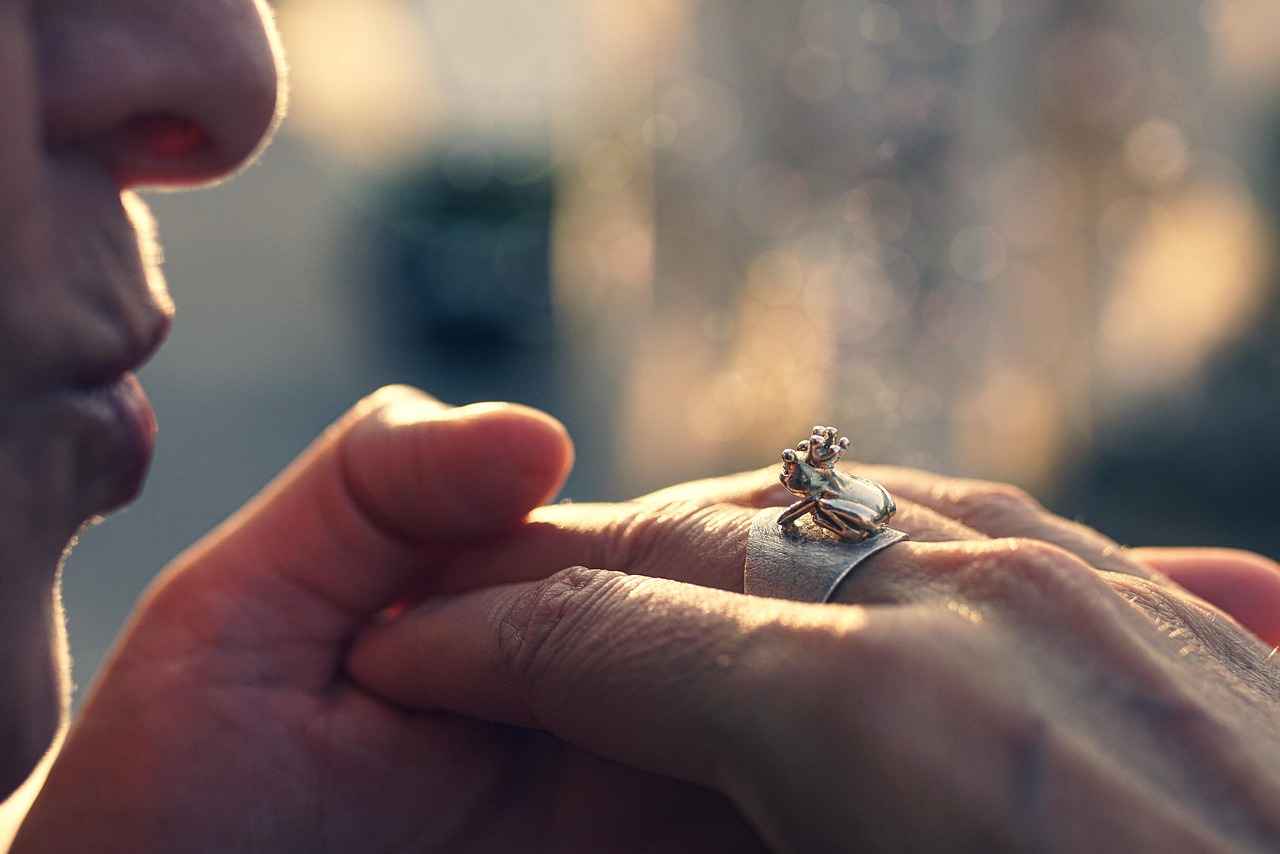
How Much Should You Spend on an Engagement Ring?
When it comes to choosing the perfect engagement ring, one of the most frequently asked questions is, “How much should you spend on an engagement ring?” This question can be quite challenging to answer, as the cost can vary significantly based on several factors, including personal preferences, cultural norms, and financial situations.
According to various surveys and expert recommendations, a common guideline suggests that individuals should spend about two to three months’ salary on an engagement ring. However, this is merely a guideline and not a strict rule. It’s essential to consider your financial situation and what you feel comfortable spending.
- Material: The type of metal used for the band (gold, platinum, silver) can significantly affect the price. Platinum, for instance, is more expensive than gold.
- Gemstone: Diamonds are the traditional choice for engagement rings, but other gemstones like sapphires or emeralds are becoming increasingly popular. The quality and size of the stone can also impact the cost.
- Brand and Designer: Rings from well-known designers or luxury brands often come with a higher price tag due to their reputation and craftsmanship.
- Customization: Customized rings may cost more than ready-made options. However, they offer a unique touch that can make the ring even more special.
Before you start shopping for an engagement ring, it’s crucial to set a budget. Consider your financial situation and what you can realistically afford without straining your finances. Remember, the ring is a symbol of love and commitment, and its value is not solely determined by its price tag.
If the traditional guidelines feel overwhelming, consider exploring alternative options. Lab-created diamonds or alternative gemstones can offer a beautiful and budget-friendly solution without compromising quality. Additionally, some couples choose to forgo the ring altogether and opt for other meaningful symbols of their commitment.
Ultimately, the amount you spend on an engagement ring should reflect your personal values and financial situation. It’s essential to find a balance between what you want and what you can afford. Remember, the most important aspect of an engagement ring is the love and commitment it represents, not the price tag attached to it.

Can You Wear a Promise Ring After Getting Engaged?
When it comes to the world of jewelry and relationships, the promise ring and the engagement ring serve as significant symbols of love and commitment. However, many individuals find themselves questioning the appropriateness of wearing a promise ring after receiving an engagement ring. This topic raises important considerations about personal choices, relationship dynamics, and cultural norms.
A promise ring is often given as a symbol of commitment and love between partners, typically before a formal engagement. This ring can signify various promises, such as fidelity, support, or a future engagement. It is essential to recognize that the meaning of a promise ring can vary greatly depending on the couple’s understanding and intentions.
On the other hand, an engagement ring is traditionally presented during a proposal, marking a significant transition in the relationship. It symbolizes a commitment to marry and often features more elaborate designs, such as diamonds or other precious stones. The cultural significance of engagement rings can differ across regions, but their role as a marker of a serious commitment remains consistent.
Many people wonder, “Can you wear a promise ring after getting engaged?” The answer largely depends on individual preferences and the dynamics of the relationship. There are several factors to consider:
- Personal Meaning: If the promise ring holds significant sentimental value for you or your partner, wearing it alongside the engagement ring can be a beautiful way to honor that commitment.
- Symbolic Representation: Some may choose to wear both rings to represent different stages of their relationship, showcasing the journey from a promise to a formal engagement.
- Style and Aesthetics: Consider how the rings look together. If they complement each other in design and style, wearing both can be visually appealing.
Before deciding to wear both rings, it is crucial to have an open discussion with your partner. This conversation can help clarify what each ring represents and ensure both partners feel comfortable with the decision. Mutual understanding can strengthen the bond and eliminate any potential misunderstandings.
In some cultures, wearing a promise ring after receiving an engagement ring may be seen as unconventional. However, modern relationships often embrace personal choices over traditional norms. It’s essential to consider your social circle and cultural background when making this decision.
Ultimately, whether to wear a promise ring after getting engaged is a personal choice that varies from couple to couple. It is essential to weigh the emotional significance, aesthetic appeal, and cultural implications of wearing both rings. By prioritizing communication and understanding within the relationship, couples can navigate this decision with confidence and clarity.
Frequently Asked Questions
- What is the main difference between a promise ring and an engagement ring?
A promise ring symbolizes a commitment that is often less formal than an engagement. It’s typically given to signify love and intention before an engagement, whereas an engagement ring marks the decision to marry.
- When is the best time to give a promise ring?
Promise rings can be given at various stages in a relationship, usually when both partners feel ready to express a deeper commitment. There’s no strict rule, but it’s often before a proposal.
- What materials are commonly used for promise rings?
Promise rings can be crafted from various materials such as silver, gold, or even gemstones. The choice often reflects personal style and the significance of the commitment.
- How much should I spend on a promise ring?
There’s no set price for promise rings, but they are generally less expensive than engagement rings. Consider your budget and the meaning behind the ring when making your choice.
- Can I wear my promise ring after getting engaged?
Absolutely! Many people choose to wear both rings as a symbol of their journey together. It’s a personal choice, so wear what feels right for you.
